Description
About the Gala Apple Tree
Crisp, sweet, and wildly popular—the Gala Apple Tree (Malus domestica ‘Gala’) has earned its place as one of the most widely grown and best-loved apple varieties in the world. First discovered in New Zealand in the 1930s, this early-season apple is beloved for its delicious flavor, ornamental beauty, and reliable performance in home orchards.
Gala apples have a perfectly balanced sweet-tart flavor, juicy texture, and a satisfying crispness. They’re excellent for fresh eating, juicing, cooking, baking, and canning. The fruit also stores well, making Gala a go-to multipurpose apple for the kitchen and pantry.
The apples are visually stunning, with a yellow background overlaid by red-orange striping—a true standout in any harvest basket. Expect fruit to ripen in late September to early October, depending on your growing zone.
How to Grow a Gala Apple Tree
Gala apple trees are a great choice for beginner and experienced growers alike, known for their adaptability and productivity.
Site Selection & Sunlight
Requires full sun (6–8 hours per day) for best fruit development
- Thrives in well-drained loamy soil with a pH between 6.0 and 7.0
Pollination
- Gala Apple Trees require a pollinator to bear fruit. See recommended pollinators below.
Care & Maintenance
- Fertilize in early spring with a balanced fertilizer (10-10-10 or similar)
- Prune annually in late winter to remove dead wood and promote airflow and sunlight penetration
- Watch for common apple pests and diseases such as aphids, codling moth, or apple scab, and apply treatments as needed
Chill Hours
- Requires approximately 500–700 chill hours, making Gala ideal for USDA Zones 5–8
Whether you’re planting a single tree or starting a full orchard, the Gala apple tree brings dependability, beauty, and delicious flavor to your backyard. It’s a rewarding and productive variety that earns its popularity with every crisp bite.
- View our complete list of Gala Apple Trees.
Characteristics
| Bloom Color | White |
| Bloom Time | Mid |
| Chill Hours | 700 |
| Fruit Color | Red |
| Fruit Size | Medium - Large |
| Hardiness Zone Range | 5 - 8 |
| Pollination | Pollinator Required |
| Ripens/Harvest | Early October |
| Shade/Sun | Full Sun |
| Soil Composition | Loamy |
| Soil Moisture | Well Drained |
| Soil pH Level | 6.0 - 7.0 |
| Taste | Sweet, Tart |
| Texture | Crisp, Juicy |
| Years to Bear | 2 - 5 |
Zone Compatibility
Pollination
Tools & Supplies
Planting & Care
Learn all about how to grow apple trees in The Growing Guide. An entire section of our website dedicated to your growing success.
Questions & Answers
Yes it should. Flowering group 4
Fibrous roots of apple trees develop radially and horizontally from deep roots, penetrating the earth in all directions away from the plant in quest of moisture and nutrients. They are often found within the top three feet of the soil, near the surface
These two varieties should cross pollinate as they both have a Mid season bloom.
I don't know where you are but Im in Missouri and many of my apples were misshapen this year. Several pests wonout as well almost every apple had insect damage and I treated my trees accordingly.
That’s a great question! Gala apples can grow in your area (Round Rock, TX, Zone 8b), but your red clay and rocky subsoil will require some adjustments for fruit tree success. clay and rocky soils present challenges. Apples prefer well-drained, loamy soil, so heavy clay with poor drainage can lead to root rot and other issues if you don’t amend or adjust your planting method. 1. Avoid Digging a Big Hole in Clay
Digging deep into clay or rocky soil can create a “bowl effect,” trapping water around the roots and causing rot. Instead:
Focus on wide, shallow planting. Dig twice as wide as the root ball but not deeper than the roots. This encourages roots to spread outward instead of sitting in water.
2. Plant Slightly Above Ground Level
Raise the tree a few inches above the soil line. Build a mound or slight berm, especially if you see standing water after rains. This helps improve drainage.
3. Mix in Organic Matter
Blend the top 8-10 inches of topsoil with compost and well-rotted manure to improve drainage and nutrients. Don’t overdo it—roots need to adapt to the native soil, or they’ll stay in the planting hole and struggle later.
4. Mulch is Your Friend
3-4 inches of mulch around the base (but not against the trunk) will:
Conserve moisture.
Suppress weeds.
Regulate soil temperature.
Break down over time to improve soil health.
5. Watering Adjustments
Clay holds water longer than sandy soil. Water deeply but less frequently:
Once or twice a week (depending on rain).
Feel the soil—if it’s wet 2-3 inches down, hold off on watering.
We appreciate you reaching out to us. Because weather and soil conditions vary so much from year to year and even within your zone, it's best to think of your planting time as a range of favorable conditions instead of an exact time.
You can plant new plants and trees:
1) when the ground is not frozen.
2) when daytime temperatures are above freezing (32ºF) and below 90ºF.
3) when extreme weather (blizzard, hail, torrential rain, etc.) is not in the forecast. Be sure to keep plants watered if you're transplanting in warm and/or dry weather.
If you have any further questions please don't hesitate to reach back out to us. Have a great day!
There is a possibility that they could cross but it is not a guarantee. The Gala has only a mid season bloom time where the Honeycrisp could be anywhere from Mid- Late bloom time. It is best to use varieties that bloom at the exact same time.
Apple trees on dwarf rootstocks can go in a pot of between 18" - 22" / 45cm-60cm diameter. Alternatively look for containers with a volume of 40-60 litres.
Apple trees on dwarf rootstocks can go in a pot of between 18" - 22" / 45cm-60cm diameter. Alternatively look for containers with a volume of 40-60 litres.
NO I am sorry this is not a disease resistant variety.

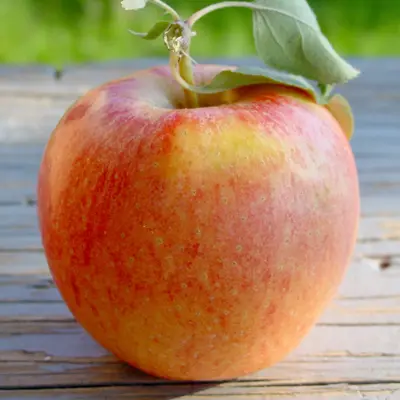
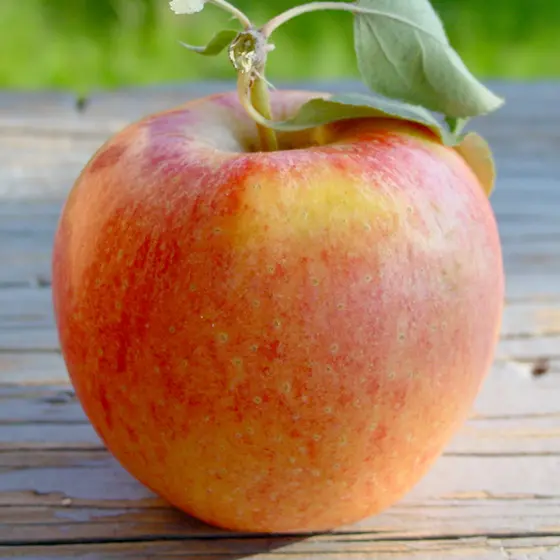
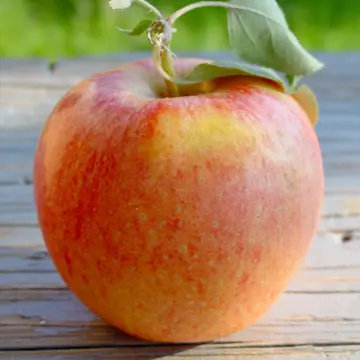
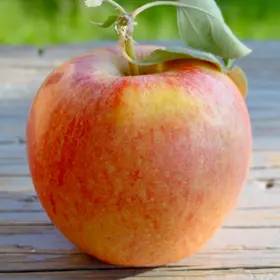
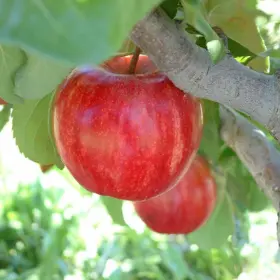
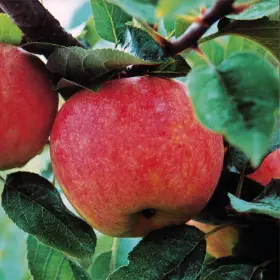
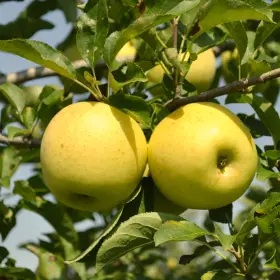
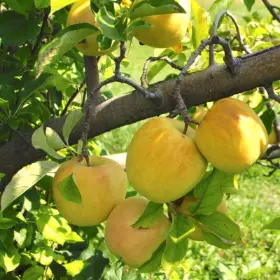
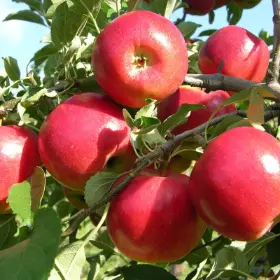
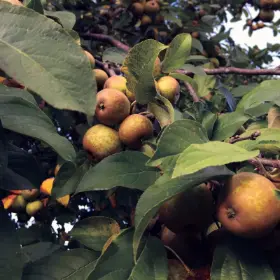

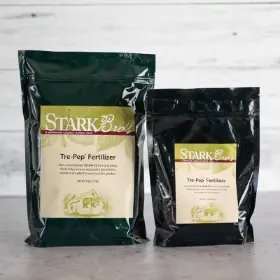
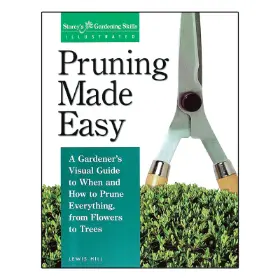
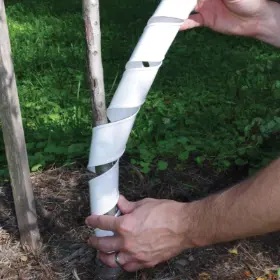
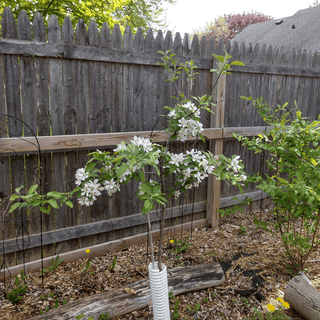
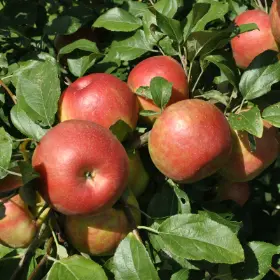
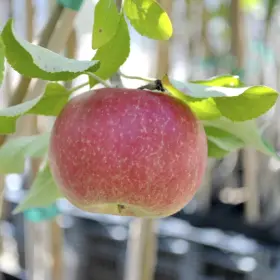

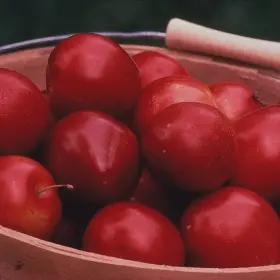
Cross pollinator for Fuji's and Granny Smith. Will be using Italian bees and harvesting honey to make a mead to be distilled into a brandy. Gala's have a high sugar content.
I like the flavor
We love the flavor and the crispness of this apple, and it is a good apple tree to plant with Rome Beauty apple tree.
To replace tree that a groundhog took out